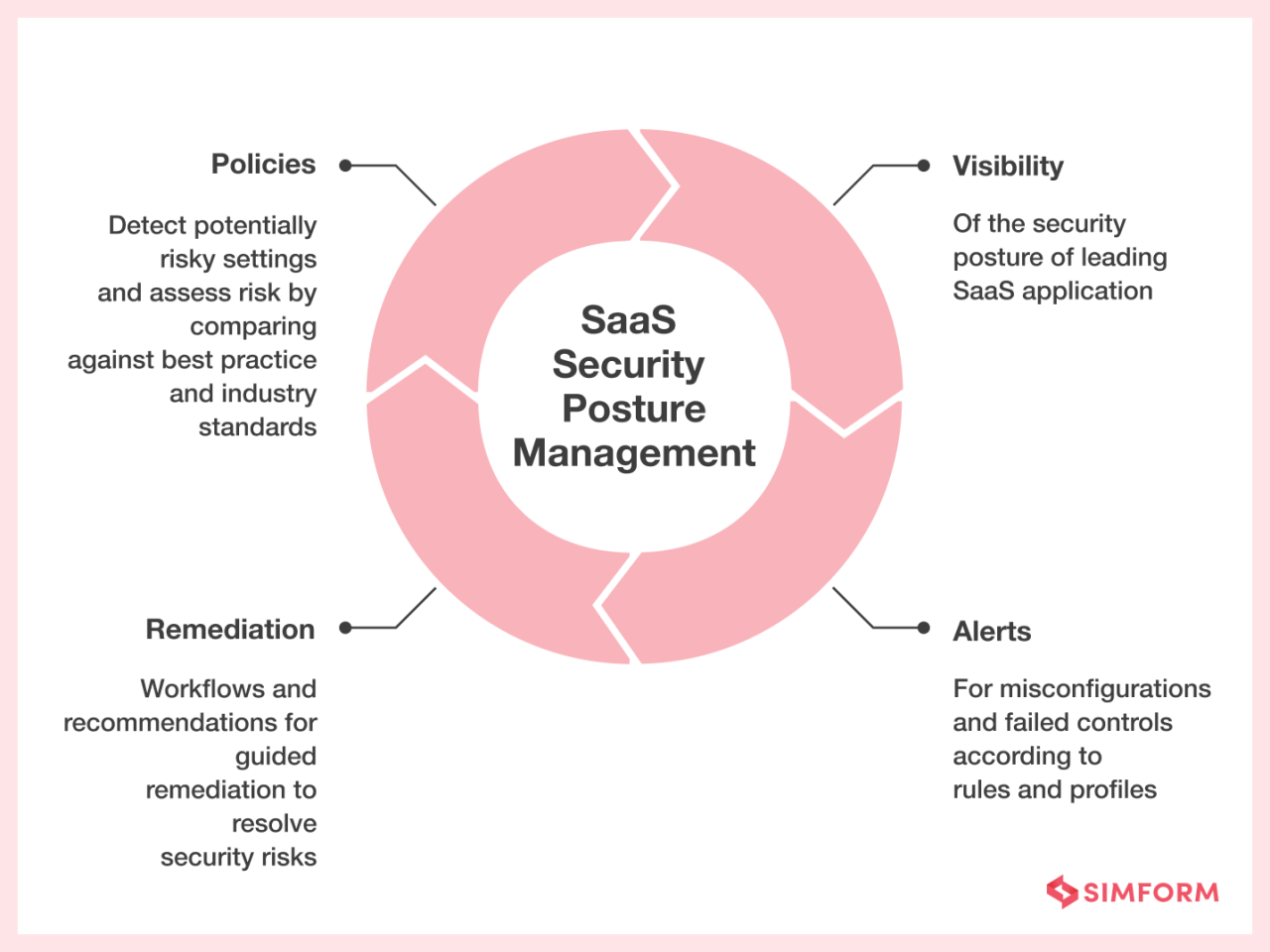Did you know that misconfigured SaaS applications are a leading cause of data breaches in modern businesses? As organizations increasingly rely on Software-as-a-Service (SaaS) platforms like Salesforce, Microsoft 365, and Google Workspace to power their operations, the attack surface expands dramatically.
This is where SaaS Security Posture Management (SSPM) comes in. SSPM is the process of continuously assessing, identifying, and remediating security risks associated with your SaaS applications. It’s about ensuring your SaaS configurations are secure, compliant, and aligned with best practices.
In this article, we’ll delve into the critical role of SSPM, explore common security challenges businesses face with SaaS, and outline practical strategies for building a robust security posture. Discover how to proactively protect your sensitive data, minimize your risk of breaches, and maintain a secure SaaS environment in today’s complex digital landscape.
SaaS Security Posture Management: Taking Control of Your Cloud Security
Software as a Service (SaaS) has transformed how organizations function. It offers agility and accessibility. However, this convenience introduces novel security risks that conventional solutions often fail to address effectively.
That’s where SaaS Security Posture Management (SSPM) comes in. Think of it as your comprehensive toolkit for understanding and fortifying your SaaS application security.
SSPM solutions provide continuous monitoring and assessment. This provides a detailed view of your security configuration. It helps identify vulnerabilities and misconfigurations across your SaaS landscape.
Ultimately, an effective SSPM ensures your data remains shielded. Your operations are stable, and you maintain compliance within an ever-evolving threat environment. It’s a proactive defense strategy.
Why is SaaS Security Posture Management Important?

SaaS adoption has exploded. This means more data and critical processes are living outside traditional network perimeters. This creates a larger attack surface for malicious actors.
Many organizations suffer from configuration drift. This is when SaaS settings unintentionally deviate from established security benchmarks, creating easy points of entry.
Moreover, shared responsibility models mean you are responsible for securing your side of the equation. SSPM bridges that gap, ensuring you maintain control over your security destiny.
Compliance regulations are also becoming increasingly stringent. SSPM provides the visibility and audit trails necessary to demonstrate adherence to industry standards.
Simply put, if you are using SaaS, you require SSPM. It’s no longer a luxury, it’s a foundational aspect of a robust cybersecurity strategy.
Key Capabilities of an SSPM Solution
An effective SSPM solution offers a range of essential functions. These functions provide complete visibility and control over your SaaS environment’s security posture.
Continuous Monitoring: SSPM ceaselessly monitors your SaaS applications. It instantly alerts you to configuration changes and potential security concerns.
Misconfiguration Detection: It automatically identifies deviations from industry best practices and your organization’s security policies. This helps prevent security gaps.
Risk Prioritization: SSPM ranks discovered vulnerabilities according to their impact. This enables your team to focus their resources on the most pressing issues first.
Automated Remediation: Many SSPM tools provide automated fixes for identified misconfigurations. This significantly reduces the manual effort required to maintain a strong security stance.
Compliance Reporting: SSPM simplifies compliance audits. It generates reports demonstrating adherence to standards such as SOC 2, HIPAA, and GDPR.
Benefits of Implementing an SSPM Platform
Investing in a robust SSPM platform offers significant advantages. These advantages directly impact your organization’s security. It also impacts its compliance and operational efficiency.
Reduced Risk of Data Breaches: By proactively identifying and remediating security vulnerabilities, SSPM reduces the probability of data breaches and unauthorized access.
Improved Compliance Posture: SSPM simplifies demonstrating compliance. It automates reporting and evidence collection for regulatory audits.
Increased Operational Efficiency: Automated monitoring and remediation frees up your security team to focus on strategic initiatives rather than tedious manual tasks.
Enhanced Visibility and Control: Gain a unified view of your SaaS security posture across various applications. This improves decision-making and risk management.
Cost Savings: By preventing breaches and streamlining security operations, SSPM can lead to considerable cost savings over time.
Choosing the Right SSPM Solution
Selecting the right SSPM solution is crucial. It directly impacts your organization’s ability to secure its SaaS landscape. Here are key considerations to help you make an informed decision.
SaaS Application Coverage: Verify that the solution supports the SaaS applications you currently use. Also, confirm if it supports those you plan to adopt in the future.
Integration Capabilities: The SSPM should seamlessly integrate with your existing security tools and workflows. This creates a unified security ecosystem.
Automation and Remediation Features: Look for a platform that offers automated remediation capabilities. This minimizes manual effort and accelerates response times.
Ease of Use: Choose an SSPM with an intuitive interface and straightforward configuration. This simplifies adoption and ensures your team can easily manage it.
Scalability: Ensure the solution can scale as your SaaS usage grows. This avoids performance bottlenecks and maintains coverage across your expanding environment.